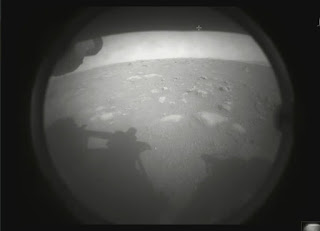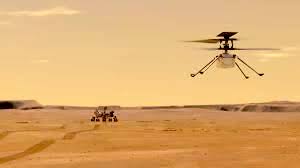NASA spacecraft is flying into the Martian atmosphere of Mars at a speed of 20,000 kilometers per hour,robort Rover
 |
| NASA rover Perseverance following its landing on Mars, per NASA. |
NASA confirmed Thursday that the Mars 2020 spacecraft entered the Red Planet's atmosphere with the Perseverance rover.
"We have a confirmation interface," said Operations Chief Suati Mohan.
Touchdown confirmed. The #CountdownToMars is complete, but the mission is just beginning. pic.twitter.com/UvOyXQhhN9
— NASA (@NASA) February 18, 2021
The risky, autonomously controlled landing phase lasts about seven minutes and takes more than 11 minutes for radio signals to reach Earth.
This means that the rover was already on the surface, but it is not yet known whether he fell or landed successfully.
 |
| NASA Rover on the surface of the mars |
He was expected to use a supersonic parachute the size of a Minor League pitch before launching an eight-engine jet pack to further slow its descent, before finally carefully lowering the rover to the ground on the reins.
The 7.7 km to 6.6 km landing site places the plow on an ancient river delta site that may contain evidence of fossilized microbial life.
NASA scientists will monitor the progress of the permanent descent by hearing a simple sound from the ship and the data it sends to an intelligence orbiter on Mars.
Congratulations to NASA and everyone whose hard work made Perseverance’s historic landing possible. Today proved once again that with the power of science and American ingenuity, nothing is beyond the realm of possibility. pic.twitter.com/NzSxW6nw4k
— President Biden (@POTUS) February 18, 2021
The crater is "really dangerous to land," said Alan Chen, principal engineer for the landing stage, Thursday. "There is a rock face about 200 feet high that extends past the landing area.
"There's a crater full of sand that we can't get out of if we land in it. And there are rocks in the east, fields of rock everywhere actually - it's going to be a bad day for us if we land on them."
Perseverance has new landing arm technology that allows more accurate navigation on landing, including Relative Terrain Navigation, which uses a special camera to identify surface features and compare them to a boarding pass.
The conditions are dynamic and there is always the possibility of no return signal - but this does not mean a landing as the spacecraft will do all of its own maneuvers.
Post a Comment
Don't allow spam link